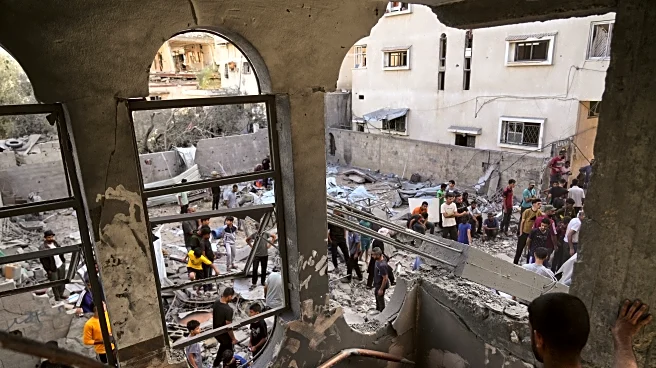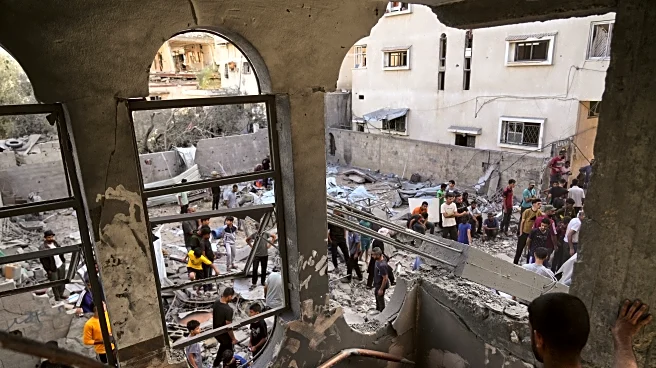What's Happening?
The United States has put forward a comprehensive cease-fire proposal for Gaza, which notably excludes Hamas from any governing role in the region. The plan includes several key provisions: the release of all Israeli hostages within 48 hours, the establishment of a transitional government until the Palestinian Authority can assume control, and assurances against the forced displacement of Gazans. Additionally, Israel is expected to guarantee that it will not strike Qatar again. This proposal comes amid ongoing conflict in Gaza, where Israeli military operations have resulted in significant civilian casualties and a humanitarian crisis.
Why It's Important?
The exclusion of Hamas from governance in Gaza is a significant shift in U.S. policy, potentially altering the power dynamics in the region. This move could weaken Hamas's influence and pave the way for the Palestinian Authority to gain control, which may lead to a more stable governance structure. However, the proposal's success depends on its acceptance by both Israeli and Palestinian stakeholders. The plan's emphasis on humanitarian considerations, such as preventing forced displacement, addresses international concerns about the humanitarian impact of the conflict. The proposal's reception in Israel, particularly among the far-right coalition, remains uncertain, as they have expressed opposition to ending the conflict without fully eradicating Hamas.
What's Next?
The proposal's future hinges on its acceptance by the involved parties. Israel's response, especially from its far-right coalition, will be crucial, as they have been resistant to any cease-fire that does not completely dismantle Hamas. The Palestinian Authority's ability to establish a transitional government and manage Gaza's governance will also be a critical factor. International reactions, particularly from Qatar and other regional players, could influence the proposal's implementation and success.












